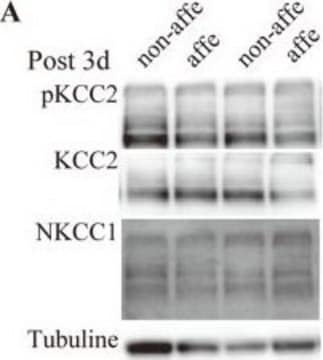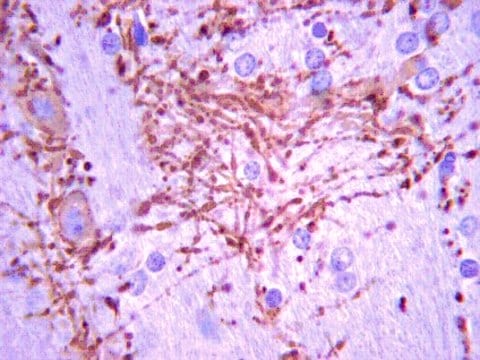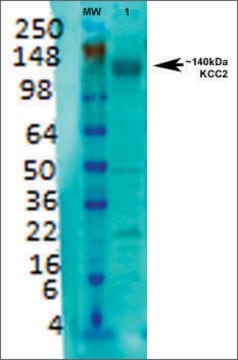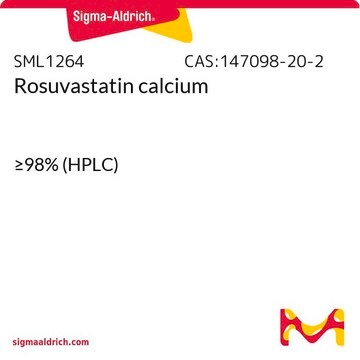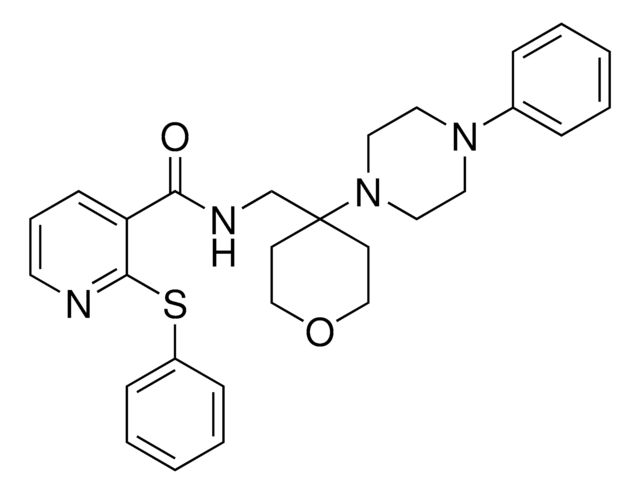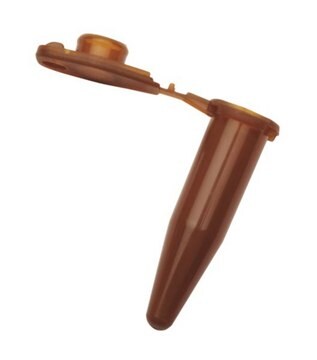C2366
Anti-K+/Cl- Cotransporter (KCC2) antibody produced in rabbit
IgG fraction of antiserum, buffered aqueous solution
Synonym(s):
Anti-DEE34, Anti-EIEE34, Anti-EIG14, Anti-KCC2, Anti-hKCC2
About This Item
Recommended Products
biological source
rabbit
Quality Level
conjugate
unconjugated
antibody form
IgG fraction of antiserum
antibody product type
primary antibodies
clone
polyclonal
form
buffered aqueous solution
species reactivity
canine, rat
technique(s)
western blot: 0.5-2.0 μg/mL using rat brain membrane preparation
UniProt accession no.
shipped in
dry ice
storage temp.
−20°C
target post-translational modification
unmodified
Gene Information
rat ... Slc12a5(171373)
General description
The cation-chloride cotransporters (CCCs) are glycoproteins involved in transport of ions, including chloride, across the cell membrane without an accompanying net charge movement; thus this type of transport is driven without the direct hydrolysis of ATP. The energy for the transport is derived from the cation gradient generated by the Na+/K+/ATPase. The CCCs also play a critical role in influencing GABA- and glycine-mediated signaling. Other transporters that participate in chloride homeostasis include Na+-dependent and Na+-independent anion exchangers, which exchange chloride for HCO3- ions
Three cotransporters belonging to this family include sodiumchloride( Na+/Cl-/ ) cotransporters (NCCs), sodiumpotassium-chloride (Na+/K+/2Cl-) cotransporters (NKCCs) and potassium-chloride (K+/Cl-) cotransporters (KCCs). K+/Cl- cotransporter (KCC2) is the major neuronal chloride transporter. It has been proposed to play a role in the modulation of neuronal responses to γ-aminobutyric acid (GABA). GABA-mediated fasthyperpolarizing inhibition depends on extrusion of chloride by KCC2 In conditions of neuronal damage, where neuronal excitability is increased, and in spinal cord in models of neuropathic pain, the expression of the KCC2 transporter is decreased
Specificity
Immunogen
Application
Immunocytochemistry (1 paper)
Target description
Disclaimer
Not finding the right product?
Try our Product Selector Tool.
Storage Class Code
10 - Combustible liquids
WGK
WGK 1
Flash Point(F)
Not applicable
Flash Point(C)
Not applicable
Personal Protective Equipment
Certificates of Analysis (COA)
Search for Certificates of Analysis (COA) by entering the products Lot/Batch Number. Lot and Batch Numbers can be found on a product’s label following the words ‘Lot’ or ‘Batch’.
Already Own This Product?
Find documentation for the products that you have recently purchased in the Document Library.
Our team of scientists has experience in all areas of research including Life Science, Material Science, Chemical Synthesis, Chromatography, Analytical and many others.
Contact Technical Service